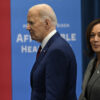Three years ago, Congress passed the Budget Control Act (BCA) in an attempt to curb spending and begin reducing the deficit. Sequestration was included in the BCA to motivate lawmakers to agree to additional deficit-reduction measures, including reductions in entitlement spending. Regrettably, the super committee squandered the opportunity to address the key drivers of spending and debt before sequestration kicked in.
While Congress’s attempt to curb government spending is certainly a necessary endeavor, the effect on defense was disproportionate and devastating.
Simply put, the BCA sets spending limits on defense through fiscal year (FY) 2021 that amount to almost $1 trillion in cuts to defense.
Setting an artificially low topline for defense over a 10-year period means that the budget cannot address national security requirements, threats, or military needs. The last time a defense budget considered threats and military needs was in the FY 2012 Gates budget.
The Department of Defense (DOD) was given some relief by the Bipartisan Budget Act, but starting in FY 2016, the spending limits set by the BCA five years prior will return.
Given everything that has changed in the past several years, the idea that the size of the 2016 defense budget would be based on the BCA limit established in 2011 is absurd. Here’s a quick recap of what has happened since the passage of the BCA:
2012 September
- The U.S. ambassador to Libya is killed and the embassy is razed by a group of al-Qaeda-linked terrorists.
2013 November
- China exacerbates tensions in the East China Sea by extending its air defense identification zone to include a series of islands that Japan also claims ownership over.
2014 February
- Russian forces invade Crimea.
2014 March
- China publicizes that it will increase military spending by 12.2 percent in 2014 alone. As a result of increased military spending, China is in the process of adding new platforms to its military, including a nuclear arsenal that will soon have twice as many warheads able to hit U.S. targets; two fifth-generation fighter aircraft; a long-range stealth bomber; and a formidable navy that, by 2020, will be significantly larger than its American counterpart.
2014 April
- Pro-Russian separatists begin to occupy government buildings in eastern Ukraine and wage a destructive insurgency.
2014 June
- Russian tanks and heavy artillery are reported entering Ukraine from the Russian border adding to the chaos and the number of casualties. It appears highly likely that Russia is providing military aid to the Ukrainian rebels despite its claims to the contrary.
2014 July
- A surface-to-air missile, likely fired by pro-Russian separatists using Russian military equipment, brings down Malaysia Airlines flight MH17 killing all 295 passengers onboard.
2014 September
- The Islamic State (ISIS), through a blitzkrieg campaign of terror and brutal tactics, threatens the stability of the Middle East. The terrorist organization is now recruiting fighters from within our own borders as well as those of our friends and allies. ISIS has an estimated $2 billion in resources.
2014 October
- In a historical first, Russia is deploying a greater number of active nuclear weapons than America, and in Europe, they have 10 times as many tactical nuclear weapons systems.
- The Ebola virus has ravaged West Africa and claimed over 4,000 lives. To stem the flow of this outbreak, the United States Government has approved the deployment of 4,000 troops to West Africa.
Clearly, no defense budget concocted in 2011 could sufficiently address these threats. Rather, a good defense budget must accurately measure America’s security needs, and then provide for a force that can address those needs. However, adequately funding national defense is not an invitation for fiscal irresponsibility, more debt, and higher taxes. To honor the original intent of the BCA and sequestration, Congress should control the growth in entitlement spending.
Greg Andrews is currently a member of the Young Leaders Program at The Heritage Foundation. For more information on interning at Heritage, please click here.


























